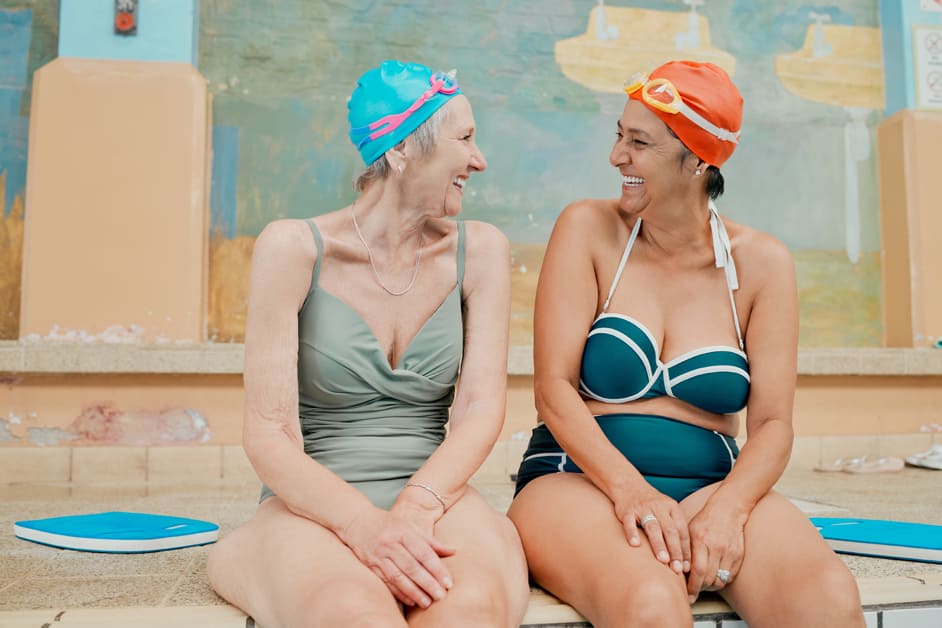Introduction
Do you suffer from knee pain? Taking care of your joints is essential. To stay active without straining your knees, low-impact sports are ideal. This Ultimate Guide gives you the best low-impact sports for relieving knee pain. Also, we provide tips on how to do them correctly.
Definition of Low-Impact Sports
Low-impact sports involve activities which have minimal harm to the body. They are slower and less jarring than medium or high impact sports. These activities allow for greater range of motion, making them perfect for people with knee or joint pain.
This article outlines low-impact sports and how they can help relieve knee pain:
Benefits of Low-Impact Sports
Low-impact sports can benefit those with knee pain. Unlike high-impact activities, they are less likely to cause injury or worsen conditions such as tendonitis or osteoarthritis. They may provide more flexibility for the joint, as high-impact sports can quickly reach a point where the force on the joint is too much. Low-impact sports usually require only low levels of physical fitness, making them more accessible to those with medical issues or limited mobility.
Furthermore, low-impact sports can improve range of motion, reduce inflammation and stiffness in knee joints and speed up healing. This is because they place less weight and impact on the joint than traditional exercises like running or jumping jacks. Low-impact exercises also add less stress on connective tissues, which is helpful if you are looking to build strength while protecting tendons and ligaments.
Types of Low-Impact Sports
Gettin’ active with low-impact sports can help ease knee pain. These activities put less strain on your joints whilst still givin’ you a good workout. Swimming, cycling, yoga, tai chi – the list of low-impact sports is long! Let’s take a peek at some of the most popular ones:
Swimming
Swimming is a great choice for those suffering from knee pain. It’s low-impact, so it won’t put weight on the knee joint. Plus, it builds strength and cardio fitness! Swimming is an aerobic exercise with no impact on joints, vertebrae, or tendons. It also improves balance and coordination, and strengthens muscles around the knee joint.
Different swim styles include breaststroke, backstroke, freestyle, and butterfly. Pool exercises without swimming are possible too. For example, use aqua jogging belts or fins for legs-only exercises. The water helps support your body weight, reducing stress on the knees while you move and stretch.
Cycling
Cycling is great for those with knee pain. It strengthens the muscles around the affected joint without too much strain. You get a reduced risk of overuse or inflammation. Plus, cycling can even relieve knee pain and discomfort. It can loosen tight muscles and improve range of motion.
Indoor stationary biking is a safe way to exercise. There are many types of bikes available and some models have adjustable resistance. You can monitor progress with details like distance, calories burned, and altitude gained. Be sure to talk to your doctor first!
Yoga
Yoga is an exercise with low impact. It entails physical postures, breathing exercises and relaxation techniques. This form of exercise is popular in the West and has been around for thousands of years, originating from India.
It is beneficial for overall health. It can help with posture support, muscle strength, balance and coordination, flexibility and oxygen-rich blood circulation. Additionally, it is used for stress relief and meditation purposes. Yoga can also prevent chronic diseases like osteoporosis and heart conditions.
There are various styles of yoga, such as sun salutations, pilates, vinyasa flow, hatha and yin yoga. All of them involve pranayama, which is a type of breathing technique. All forms of yoga can help create strength without affecting joint integrity or range of motion. With dedication, people can experience increased energy levels and improved wellbeing.
Pilates
Pilates is a low-impact form of exercise. It’s grown in popularity since its introduction to the U.S. in the 1920’s. It’s perfect for both beginner and experienced athletes. Minimal equipment is needed, and it can be done almost anywhere.
It’s designed to improve strength and stability in the core muscles, posture, reduce stress, and increase body awareness. It consists of over 500 exercises, combining breathing techniques with classical principles from physical therapy, gymnastics, dance, yoga and martial arts. This helps practitioners gain greater range of motion, while reducing the risk of injury. Instructors create individualized routines to best meet their clients’ needs for strength and flexibility.
Tai Chi
Tai Chi is an ancient Chinese form of exercise known for its calming effect. It consists of slow, graceful movements and deep breathing. This exercise improves balance and coordination while reducing stress. It also increases flexibility, muscle tone and joint mobility, as well as cardiovascular health. Plus, it doesn’t cause any strain or injury to your joints. It’s a great way to reduce joint pain and stiffness.
It’s suitable for people of any age or mobility; beginners don’t need to worry about tiring. Just go slow and gentle throughout your session!
Safety Tips
Low-impact sport can be a great way to help with knee pain! But, to stay safe, here are some tips to keep in mind:
- Reduce pain and stiffness in your knees.
- Improve balance and joint mobility.
- Remain physically active.
Follow these tips for successful low-impact sport and knee pain relief!
Warming Up
Warming up is a must before any physical activity. It lessens the risk of getting injured and makes your performance better.
Start with 5 minutes of light cardio like walking or jogging. This helps oxygen travel to your muscles and make them more flexible. Then, add dynamic stretches that focus on certain muscle groups you’ll use in the workout. Hold each stretch for 30 seconds and repeat 3 times per muscle group. This will increase range of motion, coordination, and avoid injury.
Finally, conclude with a few minutes of static stretching. Hold each position for 20-30 seconds and move to the next stretch. This increases flexibility and builds strength.
Take time to warm up correctly – this will make a huge impact on how your body feels and performs during a workout!
Cooling Down
Cooling off after a workout is vital, especially if you have knee pain. It helps your body recover and lowers the risk of injuries from activities like running and jumping. Here are some tips:
- Slow down gradually. As you approach the end of your workout, slow down slowly to give your body time to cool off properly.
- Stretch for a few minutes. Stretching helps restore muscle length and elasticity, and reduces post-exercise soreness. For example, after a brisk walk, stretch your lower body muscles like your calves, hip flexors, quadriceps and hamstrings.
- Do low-impact aerobic exercises. These gentle exercises help reduce lactic acid buildup, promote joint mobility and range of motion. This can help ease post-workout pain caused by running or jumping.
- Hydrate. Replenish water lost through sweating during exercise. Drink water before and after each session for optimal health benefits!
Stretching
Stretching is essential for any workout. It helps improve flexibility, reducing the impact on joints when you move.
Static stretches are good for those with knee pain. No large control of muscles required—just hold a stationary position for a short time. However, dynamic stretching is better for those with an active lifestyle or who do high intensity activities like running and tennis. During dynamic stretching, move your limbs through their full range of motion, contracting certain muscles.
Listen to your body, don’t push too hard, and be gentle. If anything is uncomfortable, stop. This will help get the most out of stretching and reduce the risk of injury.
Choosing the Right Equipment
Choose the right gear for low-impact sports to provide stability and decrease stress on the knee joint:
- Comfy, supportive shoes with cushioning to reduce impact on your knees.
- Rackets with shock absorbers to help reduce stress on wrists, arms, and shoulders.
- A brace designed for knee support may reduce knee pain and improve function following injury.
- Lightweight, breathable, and durable athletic wear for comfort.
- Use modified equipment such as wider racquets or lighter balls for less pressure on joints and more comfortable movements.
These tips will help you choose the proper gear for optimal safety and performance while exercising, keeping you safe from injury. Enjoy the bliss of exercise without worrying about knee pain!
Conclusion
In summary, low-impact sports can be great for knee pain relief. Swimming, Tai Chi, and yoga are all excellent options. Plus, they can enhance balance and coordination! With the right form and technique, these sports are super beneficial for those with knee pain.
Summary
When it comes to coffee roast, there are four categories:
- Light roasts are light brown and mild.
- Medium roasts are medium brown with no oil on the surface. Their flavor is stronger.
- Medium dark roasts are dark brown, with oil and a slight bittersweet aftertaste.
- Dark roasts are oily and strong, without any acidity.
Ultimately, it’s up to personal preference to decide which one you prefer. Knowing the four categories can help you make an informed decision.
Frequently Asked Questions
Q: What are some low-impact sports for knee pain relief?
A: Swimming, biking, and elliptical machines are all considered low-impact sports that are beneficial for knee pain relief. Other activities like yoga, Pilates, and Tai Chi can also be beneficial.
Q: How often should I do low-impact sports for knee pain relief?
A: It is recommended to do low-impact sports for knee pain relief at least 3-4 times per week. However, it’s important to consult with a doctor to ensure that the activity is right for you and your particular condition.
Q: What should I do to maximize the benefits of low-impact sports for knee pain relief?
A: Make sure you are doing the exercise correctly and with proper form and technique. Additionally, it’s important to warm up and cool down before and after your workout to help reduce the risk of injury. Finally, make sure to rest for a few days after each workout to give your body time to recover and repair.





